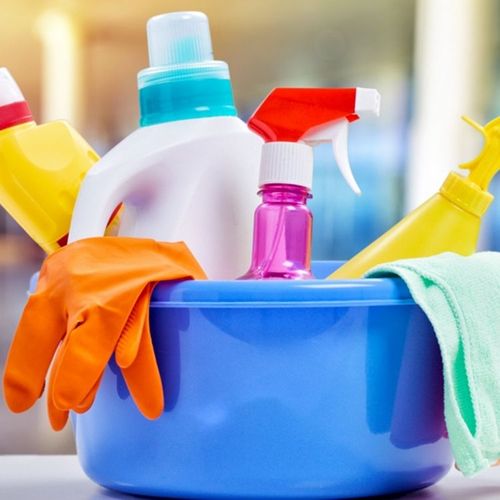As long as you breathe, eat and drink, you can't entirely escape environmental toxins. Research on the risks associated with these toxins is ongoing, but many scientists believe that existing evidence suggests that toxic buildup in our bodies contributes to the development of Parkinson's disease and may increase risk for some types of cancer and other serious conditions. A Centers for Disease Control and Prevention study that tested 10,000 men and women for the presence of 715 chemicals, including phthalates and dioxin, found that most Americans carried some combination of these toxins in small amounts in their blood.
TOXICITY IN THE HOME
Household sources of toxins that are under investigation…
- Home furnishings. Polybrominated diphenylethers (PBDEs), common ingredients in flame retardants that are used to treat upholstered chairs and sofas, foam mattresses and cushions, may be carcinogenic. PBDEs also may disrupt thyroid function and brain development.
What to do: When buying foam mattresses, upholstered furniture, etc., ask whether PBDEs were used during manufacturing.
- Pressed wood and fiberboard, which often are used in furniture and shelving, are corrunon sources of formaldehyde, a gaseous compound that is used as a disinfectant. Formaldehyde has been found to be a probable carcinogen.
What to do: Look for solid-wood products or those carrying the seal of the American National Standards Institute (ANSI), which certifies that the item is low in formaldehyde emissions.
To find furniture and other products that are low in potentially dangerous chemical emissions, consult the Green guard Environmental Institute, a nonprofit, independent organization Heahb Alerts that certifies low-emitting products, 800-427- 9681, www.Greenguard.org.
- Cleaning products. Most people use a wide variety of cleaning products, many of which contain toxic chemicals. Chlorine bleach is potentially carcinogenic and can damage the respiratory system. Among its by-products are chlorinated hydrocarbons, chloroform and tribalometbanes, all of which act like weak estrogens and cause breast cells to divide more rapidly. These by-products have been shown to cause breast tumors in animals.
What to do: Use commercial cleansers that are free of chlorine and most chemicals. Seventh Generation and Sun & Earth are two brands that are widely available at health-food stores.
Or use natural cleaning alternatives—baking soda to scrub sinks, tubs and toilets...white distilled vinegar in a pump-spray bottle to clean mirrors and windows. If you must use chlorine- containing cleaners, make sure the room is well-ventilated.
- Pesticides. Research has shown that pesticides increase risk for Parkinson's disease—and may be a cause of some cancers.
What to do: Use baits and traps instead of sprays. Try organic alternatives to toxic bug killers, including oil sprays, such as Sharpshooter, an all-natural insect killer containing plant oils...Burnout II, a natural herbicide that contains vinegar, clove and lemon...and corn gluten meal, a nafixal weed killer. All of these products are available at most garden centers that carry organic products.
For more information on pesticides and other toxic household products, visit the IU7eb site of Earth Share (a nationwide network of environmental organizations) at www.earthshare.org. .
- Cosmetics. Para-phenylenediamine, a chemical found in some dark hair dyes, increases risk for bladder cancer in humans, according to a study in the journal Carcinogenesis. Otbertoxic ingredients used in cosmetics…
- Phthalates, typically used as a solvent and plastic softener, have been linked to cancer and to birth defects of the male reproductive system. They are found in many shampoos and other hair products, cosmetics, deodorants and nail polish. To learn more about phthalates and get a list of products that contain them, go to a reliable Web site of several consumer environmental groups at www.safecosmetics.org.
- Talc, in talcum powder, has been linked to a 60% increase in the risk for ovarian cancer in women who use it in the genital area.
- Propylene glycol, an ingredient found in some moisturizing products and skin creams, is absorbed through the skin, and high levels may damage the kidneys and liver
What to do: Read labels carefully. By law, cosmetic ingredients must be listed on the label, starting with those in largest amounts. Choose all-natural alternatives, such as products made with olive oil, safflower oil or oatmeal, whenever possible. To find hair products, lotions, deodorants and other products from companies that have replaced or are replacing toxic ingredients, go to www.safecosmetics.org (look for safe companies).
SELF-DEFENSE
Antioxidants such as vitamins C and E are known to promote health by scavenging free radicals (harmful by-products of metabolism), which damage our cells and contribute to cancer and other diseases.
But antioxidants have another role that is possibly even more important in protecting against environmental toxins. Antioxidants stimulate an area of the DNA called the antioxidant responsive element (ARE), which activates a gene that produces detoxifying enzymes. This is the body's way of breaking down carcinogens and other toxins. In addition to commonly known antioxidant sources, such as brightly colored produce (carrots, beets, kale and tomatoes), be sure your diet contains...
- Cruciferous vegetables, such as cauliflower and brussels sprouts, which contain sulforaphane, a potent enzyme inducer.
- Green tea, an antioxidant source that is 20 times more potent than vitamin E, according to the American Chemical Society. Drink two to five cups daily.
- Rosemary, a source of carnosol, which has antioxidant and anticarcinogenic properties. Use rosemary in cooking, or drink one cup of rosemary tea daily. Curry, which contains curcumin and turmeric, rwo potent cancer-fighting herbs. Cook with curry three times a week.
